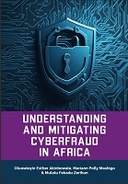Explore

Understanding and mitigating cyberfraud in Africa
0 Ungluers have
Faved this Work
Login to Fave
The book covers the overview of cyberfraud and the associated global statistics. It demonstrates practicable techniques that financial institutions can employ to make effective decisions geared towards cyberfraud mitigation. Furthermore, the book contains some emerging technologies, such as information and communication technologies (ICT), forensic accounting, big data technologies, tools and analytics employed in fraud mitigation. In addition, it highlights the implementation of some techniques, such as the fuzzy analytical hierarchy process (FAHP) and system thinking approach to address information and security challenges. The book combines a case study, empirical findings, a systematic literature review and theoretical and conceptual concepts to provide practicable solutions to mitigate cyberfraud. The major contributions of this book include the demonstration of digital and emerging techniques, such as forensic accounting for cyber fraud mitigation. It also provides in-depth statistics about cyber fraud, its causes, its threat actors, practicable mitigation solutions, and the application of a theoretical framework for fraud profiling and mitigation.
This book is included in DOAB.
Why read this book? Have your say.
You must be logged in to comment.
Rights Information
Are you the author or publisher of this work? If so, you can claim it as yours by registering as an Unglue.it rights holder.Downloads
This work has been downloaded 31 times via unglue.it ebook links.
- 31 - pdf (CC BY-NC-ND) at Unglue.it.
Keywords
- big data
- Cyberfraud
- Cyberspace
- forensic accounting
- Fraud
- fraud mitigation
- ICT
- Information Security
- IT
- Machine learning
Links
DOI: 10.4102/aosis.2024.BK485Editions

